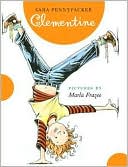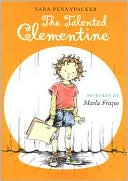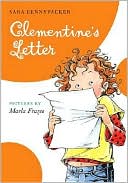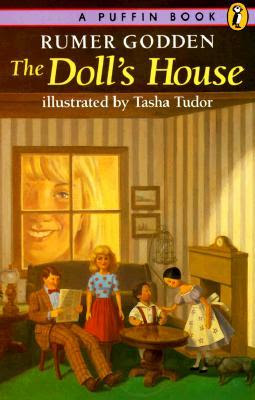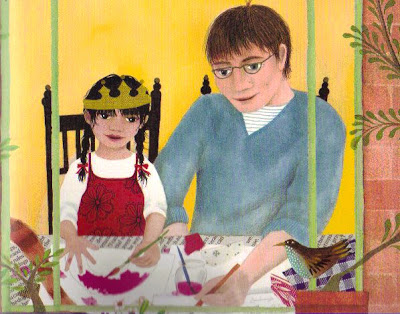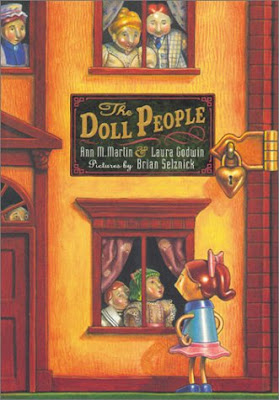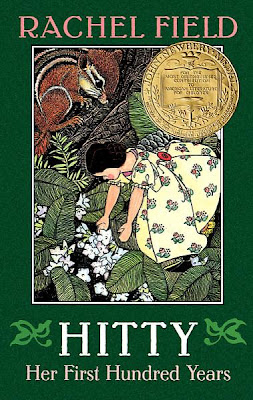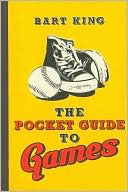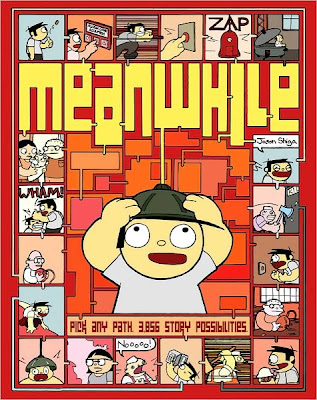EXCITING NEWS!!!!
Stuart's Cape, which was previously only in hardcover and the follow up, Stuart's Goes to School, are now available in one great book at one very low price, magnificent color illustrations and all, titled The Amazing World of Stuart, and that is a very good thing!
As I am always saying, there are so few 2nd and 3rd grade reading level books for kids written in the 50 - 70 page range, which is exactly what kids need once they move beyond "beginning to read" books. Not only are these books, written by Sara Pennypacker and illustrated by Martin Matje's, illustrator of one of my favorite series, The Ink Drinker good, they are laugh-out-loud funny and full of imagination. I discovered this as I sat on the couch and began to read Stuart's Cape. My two boys, ages 4 and 11, sat down on either side of me and chose to have me read out loud rather than turn on a movie or play a game and the laughs started almost immediately.
In Stuart's Cape, we meet a very bored Stuart. His family, Mom, Dad and Aunt Bubbles, have just moved into a new house in the town of Punbury. Stuart is despondent because, when he packed up his room and put his boxes out by the curb for the movers, the garbage collector took them instead. All his extremely valuable things, his "mannequin arm, an oven door, a dead Christmas tree, a cracked toilet seat, a box of bent coat hangers and false teeth" gone! Stuart is also very good at worrying and not so good at waiting. With trepidation, he is waiting for the first day of school, which is coming up fast. Stuart decides that he wants to have some adventures before school starts and people who have adventures are ALWAYS wearing capes. Stuart needs a cape! Happily, he finds a box of odds and ends being thrown out. Inside the box is a bundle of old neckties, a purple sock and a stapler. Stuart staples the ties together into a cape and adds the purple sock to the inside for a secret pocket. And the adventures begin! Stuart's toy dinosaur, gorilla and horse come to life (and are life-size) and make a ruckus in his room. When they get hungry they eat the left overs from Aunt Bubble's bakery job. Stuart eats a whole angel food cake and the next morning finds himself floating through the sky. Aunt Bubbles thinks he is a talking cloud and follows his instructions for making a sling shot out of the car tires to shoot a pound cake up to Stuart. Next, Stuart finds some buttered toast seeds in his purple pocket. Finally, as he is about to be sent to school, weaker than a newborn kitten because he has been told he can't wear his cape, he discovers that his cat, One-Tooth has switched places with the garbage man and is rampaging through town.
Stuart Goes to School follows Stuart and his cape to Ms Spindles third grade class and "Our Big Interesting World," which is what they call show-and-tell once you move up to third grade. Stuart still struggles with his worries, his foremost being the fear that he will get stuck in the boy's bathroom, and his desire to make new friends. Sometimes I feel like adult writers make their child characters MUCH funnier, odder, more whimsical and more precocious than I ever remember my kids being. However, my suspicions were put aside, if only momentarily, when this happened to me at work the other day. I was walking past the bathrooms and a little boy was about to enter the men's room. He looked up at me and asked me if I worked at the bookstore. I said, "Yes. Can I help you?" He pointed to the handle on the bathroom door and told me he couldn't go in because it would lock behind him. Just as I was assuring him it wouldn't his mom came around the corner and told him to go in the women's room and of course it wouldn't lock him in! Actually, as an adult I am still sometimes scared of being locked in places... The absurd humor with roots in reality found in Stuart's Cape continues in Stuart Goes to School, one of my favorite plot developments being the day that Stuart, while digging a hole in an effort to find something really interesting to share with the class, something that will make them like him, digs a hole. When he is done digging, he notices that a hole is caught on the end of the shovel. Stuart folds it up and puts it in his pocket to take to school with him. This proves both disastrous and useful when his worst fear comes true...
Martin Matje's illustrations perfectly match the silly tone of the stories while at the same time conveying genuine childhood anxieties. At the end of the book as Stuart is riding the bus home he feels like something is missing, in a good way, though, "like if the poison ivy between your toes were finally gone." What's missing is his fear. With his crazy cape and his drawing skills, he has won over his classmates. The book ends with Stuart jumping off the bus, his cape streaming around him like a giant grin. Not only is Pennypacker a mater at coming up with brilliantly wacky ideas and situations - I may never forgive her for thinking up "toast seeds," which are on par with anything Roald Dahl ever came up with - but her writing is also sensitive and sympathetic to the lives of children, even if these books are almost 100% fantasy.
Sara Pennypacker is also the author of the Clementine trio of books, illustrated by one of my favorites and winner of the 2009 Caldecott Honor for A Couple of Boys Have the Best Week Ever, Marla Frazee. I initially turned my nose up at these books because Clementine seemed to be just a little bit too much like Junie B Jones. She speaks in "kid dialect" and gets in trouble often, even when she is trying to make things better. But, I love Stuart and his anxieties so much that I am sure I can overcome my preconceived prejudices and giver her a try!
